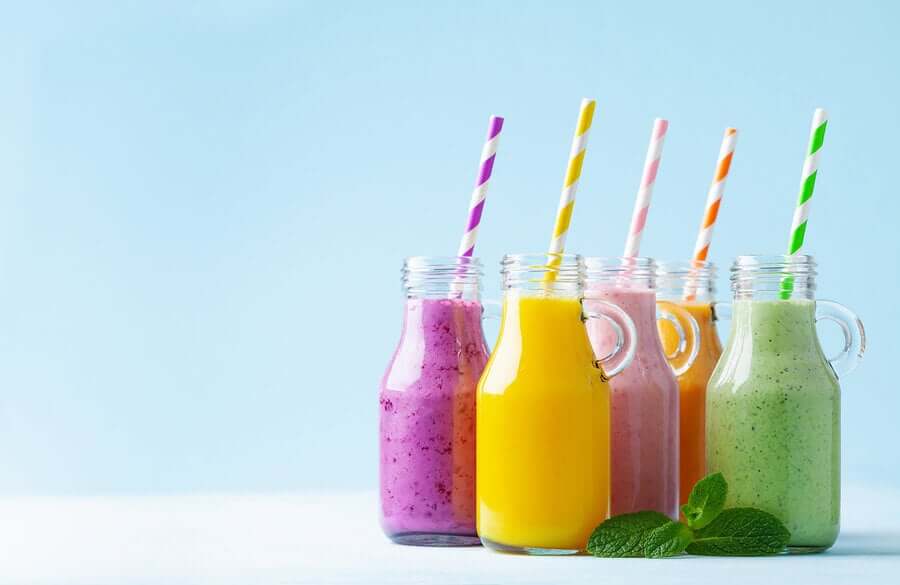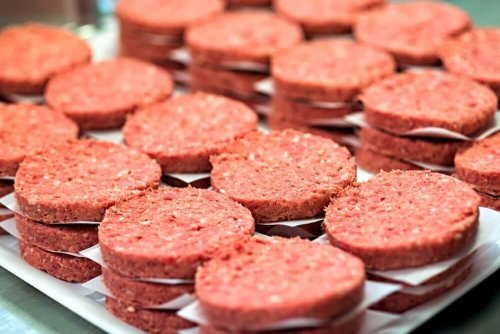The Four Most Fattening Foods


Written and verified by the pedagogue in physical education and nutritionist Elisa Morales Lupayante
How healthy is your diet? How much is it helping you achieve your goal of losing weight? Today, we’ll talk about four types of fattening foods that you would’ve never guessed.
You probably consume at least a couple of the following items daily without realizing that they’re getting in the way of losing weight. That’s why you must be aware of these fattening foods. Contrary to what most people believe, it’s not only the quantity, but the quality. Discover the four most fattening foods that you should avoid if you’re trying to lose weight in this article.
1. Fruit Juice in Large Amounts

Do you often choose fruit juice over soda because you think it’s healthier? Unfortunately, juices are fattening. Just because it’s healthier than soda doesn’t mean it’s not fattening. And both processed and natural juices are fattening, although the former are much more harmful. This is because the commercial ones don’t contain fiber in their composition, for this reason they induce less satiety, as stated in a study published in 2017.
A study in 49,106 post-menopausal women showed that regular consumption of 100% natural juice increased weight gain. To carry out the study, data related to body mass index, age, lifestyle, and changes in diet were taken into account.
The reason for this weight gain is due to the fact that juice provides a lot more sugars than fiber, especially since most people skip the pulp.
- To reverse this, reduce the amount of natural juice you consume. In addition, chew the pulp when you do. However, for the most part, if you want fruit, consume it whole.
- If you want to have a sweet drink, mix the juice of a single piece of fruit with water without adding sweeteners. In this way, you’ll reduce the amount of natural sugars provided by any fruit.
Discover: Fruit Juice for Weight Loss: 3 Recipes
2. Red Meats and Sausages

For the most part, saturated fats increase bad cholesterol levels and thus promote the onset of cardiovascular diseases. In addition, these fats accumulate quickly in certain areas of the body, such as the belly and legs.
If you can’t live without them, then at least avoid eating them fried: Opt for roast or grill them instead. Whatever your cooking method, just don’t add more fat to them.
3. Processed Cereals
Processed cereals are also fattening food. Television ads have trained us to consume them every morning and tell us they’re very healthy. However, in reality, they’re an obstacle to our well-being. Especially if we’re trying to lose weight.
Processed cereals often contain large amounts of sugar, sweeteners, and fats. The consumption of refined sugar seriously hinders weight loss processes, according to a study published in The American Journal of Clinical Nutrition.
If you like cereal, it’s best to opt for natural ones such as oats, quinoa, and wheat bran. You can add fresh fruit, nuts, and 100% honey. However, regardless of how healthy your ingredients may be, always be attentive to the amount you consume. By the way, buckwheat is an excellent source of fiber for people with celiac disease or gluten intolerance.
4. Light Diet Products

Ironically, and quite contrary to what you might think, light diet products are among the most fattening food out there. It’s common to find all kinds of cool looking brands offering their regular and light versions.
The ideal is to consume normal foods in the right amounts. If you have any doubts, consult a nutritionist to help you determine which foods you should prioritize and how much you should eat.
Read this article: 6 Great Benefits of Beer That Will Surprise You
Ideally, you should consume whole, unpackaged food in the right amounts. If you have any doubts, consult a nutritionist to help you determine which types of food you should eat more of and in which amounts. Another perk to skipping “light” products is you’ll save money, because these tend to be more expensive due to their more sophisticated processing.
Limit Your Consumption of Fattening Foods
Now that you know that these foods are also fattening, all you have to do is limit their consumption. As you can see, there are some alternatives that allow you to avoid them. We recommend you do it for your health.
And tell us: Which foods do you avoid? Which ones do you eat frequently? Did you already know that fruit juice, red meat, sausages, processed cereals and diet products are fattening?
All cited sources were thoroughly reviewed by our team to ensure their quality, reliability, currency, and validity. The bibliography of this article was considered reliable and of academic or scientific accuracy.
- Loureiro BA., Sakomura NK., Vasconcellos RS., Sembenelli G., et al., Insoluble fibres, satiety and food intake in cats fed kibble diets. J Anim Physiol Anim Nutr, 2017. 101 (5): 824-834.
- Auerbach BJ., Littman AJ., Krieger J., Young BA., et al., Association of 100 % fruit juice consumption and 3 year weight change among postmenopausal women in the in the women’s health initiative. Preventive Medicine, 2018.
- Yokum S., Stice E., Weight gain is associated with changes in nerual response to palatable food tastes varying in sugar and fat and palatable food images: a repeated measures fMRI study. Am J Clin Nutr, 2019. 110 (6): 1275-1286.
This text is provided for informational purposes only and does not replace consultation with a professional. If in doubt, consult your specialist.








